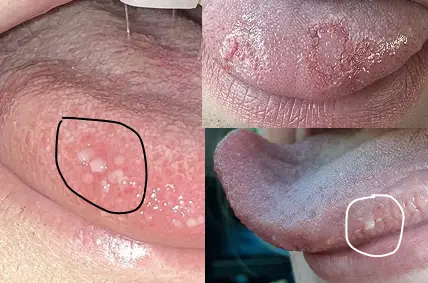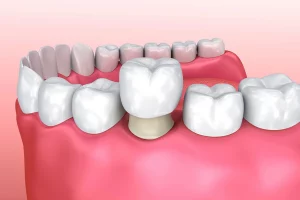Lie bumps are painful, tiny red or white coloured bumps that appear on the tongue. The common name for lie bumps is transient lingual papillitis, but people believe that they get these painful tiny bumps on their tongues when they lie, so it is called lie bumps. In recent days, this superstition has been forgotten, but the name still exists.
Lie bumps appear in two forms, generalized form (widespread) and localized form (restricted to the shorter areas). However both TLP cause pain and discomfort but they also disappear within 2-3 days without any treatments. Read this article to know about the symptoms, causes, diagnosis and treatments of lie bumps.
What Are Lie Bumps?
Lie bumps are tiny inflamed bumps that form on the tongue, typically on the top or sides. These bumps are swollen fungiform papillae, a tiny structure on the tongue that contains taste buds. When these tiny structures on the tongue get irritated or inflamed, they appear as painful, tiny red or white spots.
Lie bumps may feel alarming due to their sudden appearance and discomfort caused by them, but they are benign and self-limiting. In most cases, they resolve within 2 to 3 days without any medical intervention.
Symptoms of Lie Bumps
Lie bumps are usually easy to identify based on the following symptoms,
- Tiny red or white raised bumps on the surface of the tongue
- Pain or discomfort, especially when eating spicy, sour, or salty foods
- Burning or tingling sensation in the affected area
- Sensitivity to touch or temperature
In some very rare cases, people may also experience excess saliva production or a mild fever if the inflammation is more pronounced.
What Causes Lie Bumps?
The exact cause of transient lingual papillitis isn’t always clear, but several factors can contribute to its development. They are,
- Stress: Emotional or physical stress can trigger inflammation in various parts of the body, including the tongue.
- Minor trauma to the tongue: Accidentally biting your tongue, brushing too hard, or eating rough, crunchy foods can irritate the papillae.
- Certain foods: Acidic, spicy, or sugary foods can irritate the tongue, which can lead to inflammation.
- Gastrointestinal issues: Conditions like acid reflux or indigestion may be linked to lie bumps in some individuals.
- Hormonal changes: Fluctuations in hormones during menstruation or puberty may trigger lie bumps.
- Allergic reactions: Some food allergies or sensitivities may result in transient tongue inflammation.
- Viral infections: In very rare cases, viral infections like the common cold or flu can sometimes lead to lie bumps as part of the body’s immune response.
Are Lie Bumps Contagious?
No, lie bumps are not contagious. It is not like other conditions such as cold sores or oral thrush because lie bumps are not caused by bacteria or viruses that can be spread to others.
How to Get Rid of Lie Bumps on Tongue
While lie bumps typically go away on their own within a few days (2-3), there are also several ways to speed up the healing process and ease discomfort. They are,
1. Maintain Good Oral Hygiene
Brush your teeth twice daily and use a gentle mouthwash to keep your mouth clean and reduce bacteria that could aggravate the bumps.
2. Avoid Trigger Foods
Stay away from spicy, acidic, or salty foods that might worsen the inflammation. Opt for softer and bland foods until the bump subsides.
3. Rinse with Salt Water
A warm salt water rinse (1/2 teaspoon of salt in a cup of warm water) can help reduce inflammation and promote healing.
4. Use Over-the-Counter Gels
Topical oral gels or numbing agents like benzocaine can be applied to the bump to reduce pain and irritation.
5. Avoid Tongue Irritation
Don’t poke or scratch the bump with your teeth or fingers, as it can lead to further irritation or even infection.
6. Stay Hydrated
Drinking plenty of water can help flush out irritants and keep your mouth healthy.
When to See a Doctor
Although lie bumps are usually harmless and disappear quickly, consult a healthcare professional if
- The bump lasts longer than a week
- The bump becomes increasingly painful or swollen
- You notice other symptoms like fever, difficulty eating, or swollen lymph nodes
- The bumps recur frequently, indicating a possible underlying issue
In rare cases, what appears to be a lie bump may actually be a sign of another condition, such as a canker sore, oral thrush, or allergic reaction. So, it’s best to seek advice if you’re unsure.
Takeaway
Lie bumps are very tiny red or white coloured bumps that can cause noticeable discomfort. But there is no need to worry as they are temporary and also harmless. By knowing the causes, symptoms and treatment options, you can manage this inflammatory tongue issue with no fear.
Also, when you feel a painful bump on your tongue, you need not think it is caused by telling lies. Instead, follow good oral hygiene, avoid irritating foods and give your body a few days to heal naturally. If symptoms persist, then seek guidance from a dental or medical professional to rule out other causes. Contact Oris Dental Center for treating lie bumps and other mouth ulcer problems.





